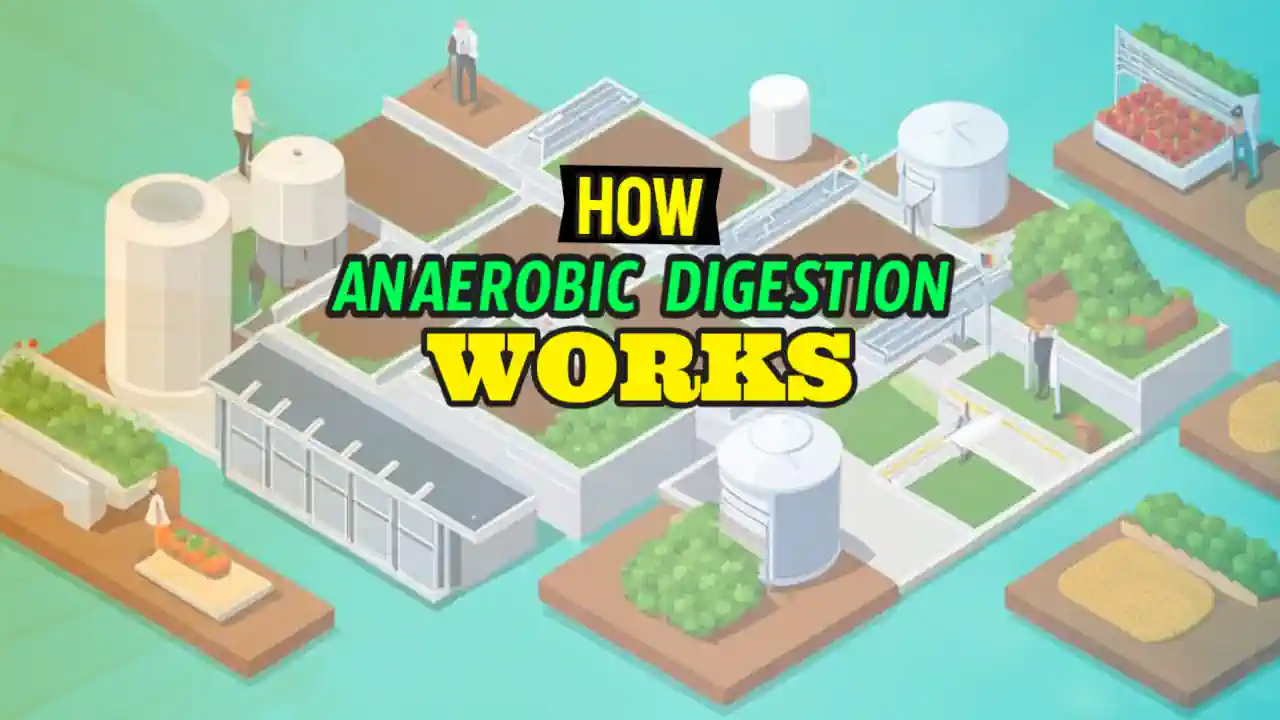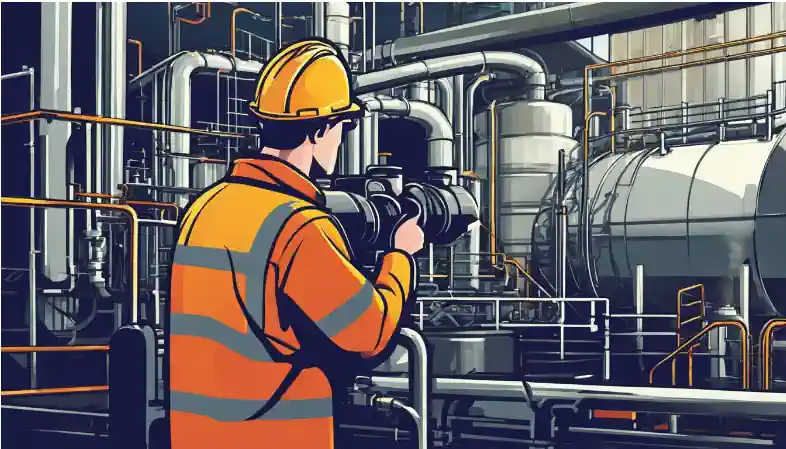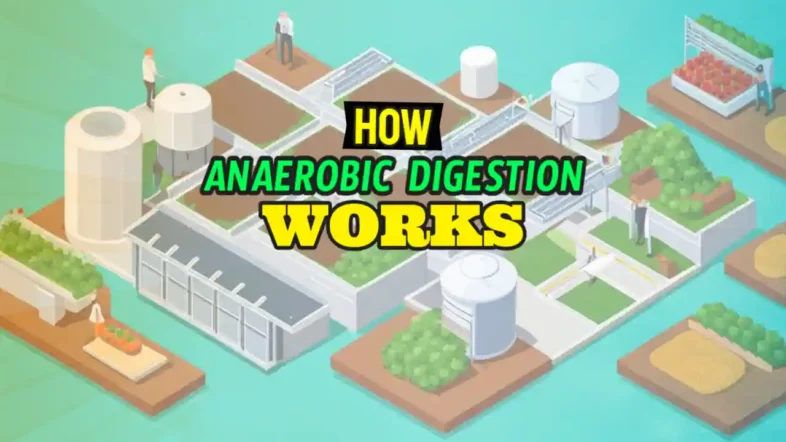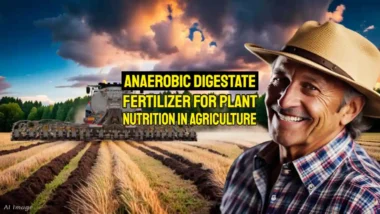How Does an Anaerobic Digester Work? A thorough overview of the process that makes biogas
Anaerobic digesters play a crucial role in waste management by breaking down organic waste into biogas and digestate.
Imagine that you are at home among the day's leftovers and garden trimmings. You might think this is just waste, but what if I told you these scraps could be transformed into energy?
That's where anaerobic digestion comes into play. It's a process not much talked about outside science labs and waste treatment facilities, yet it holds immense potential in our quest for sustainability.
It turns banana peels, apple cores, and even sewage sludge into something useful.
Anaerobic digestion is like an unseen superhero of the waste world; it works silently in oxygen-free environments to break down your unwanted organics. This means less rubbish heading to landfill and more clean energy for us.
In this guide, we'll explore how tiny microbes can turn organic matter into power-packed biogas right before your eyes without needing a breath of air!
You're probably curious about channelling this superpower for good use. Whether you work with environmental technology or simply have an interest in green solutions, understanding this process gives insight into one way our planet can heal itself while powering our lives.
Keep reading to uncover every essential detail of anaerobic digestion – from its clever stages to its surprising benefits—it's quite the adventure! Ready to delve deeper?
Key Takeaways
- Anaerobic digestion is a natural process where bacteria break down organic waste without oxygen, creating biogas and fertiliser.
- This process reduces greenhouse gases as it captures methane from the waste.
- Biogas can be used as renewable energy for heating, electricity, or even car fuel.
- The digestate from anaerobic digestion improves soil health and cuts down on the need for chemical fertilisers.
- Different types of anaerobic digesters are designed based on space, material type, climate conditions and purpose.

What is Anaerobic Digestion?
Anaerobic digestion is a natural biological process that breaks down organic matter, such as food waste and wastewater, without the presence of oxygen. This process produces biogas, a valuable source of renewable energy, and also helps to reduce odours and stabilise solids in waste management systems.
There are different types of anaerobic digesters used for various applications, such as power generation and fertiliser production.
Definition
Anaerobic digestion breaks down organic matter without oxygen. Tiny organisms work together in an oxygen-free environment to turn waste into biogas and other products. This process produces methane and carbon dioxide, along with a solid residue called digestate.
The basic idea is simple: inside special tanks called anaerobic digesters, bacteria feast on stuff like food scraps or animal manure. These microorganisms are great at their job, helping reduce greenhouse gases by capturing the methane that would otherwise escape into the air.
Now let's look at how these digesters come in different shapes and sizes.
Basic Process
Anaerobic digestion is a natural, biological process. This biochemical reaction results in the production of biogas, which mainly consists of methane and carbon dioxide, alongside small amounts of other gases.
The organic waste is decomposed through the metabolic activity of anaerobic microorganisms, creating an efficient way to manage waste while simultaneously producing valuable byproducts such as biogas and digestate.
Anaerobic digesters are designed to facilitate this process deliberately to:
- minimise odours,
- reduce pathogens, and
- capture methane emissions from organic waste.
This oxygen-free digestion process has wide-ranging applications for industries and municipalities seeking sustainable waste management solutions. It can be used to treat various organic materials like animal manure, food waste, or wastewater biosolids while also contributing significantly to energy production and reducing greenhouse gas emissions.

Types of Digesters
Anaerobic digesters come in various types, split into two groups. Wet processes use water to pump organic pulp and slurries and dry processes (SSAD) digest without pumping. Instead, in dry processes, the “substrate” is kept in the solid state and handled through the process on conveyors and by loading vehicles with the minimum amount of water use.
Wet anaerobic digestion is by far the most common. It includes, for example, covered lagoon digesters, plug flow digesters, complete mix digesters (CSTRs), and fixed film or attached growth digesters. Covered lagoon digesters are shallow ponds with impermeable covers that trap biogas.
Plug-flow digesters allow waste to be added continuously at one end while the digested material is removed from the other end. Complete mix or wet digestion systems completely mix organic waste with microorganisms inside a heated tank to speed up the decomposition process.
Fixed film or attached growth systems use a media to support bacterial growth for efficient biogas production.
These different types of anaerobic digesters offer flexibility and can be designed based on specific needs such as space availability, type of feedstock, climate conditions, and intended purpose.
The Process of Anaerobic Digestion
Anaerobic digestion occurs in several stages, starting with the hydrolysis of complex organic matter into simpler compounds, followed by acidogenesis and acetogenesis, and finally leading to methanogenesis.
The configuration of digesters plays a crucial role in preventing inhibition and ensuring the efficient breakdown of organic waste.

Stages and Configuration
Now we will describe in more detail how anaerobic digestion occurs in four stages: hydrolysis, acidogenesis, acetogenesis, and methanogenesis. During hydrolysis, enzymes break down complex organic matter into simple sugars and amino acids.
In the acidogenesis stage, acidogenic bacteria transform these substances into volatile fatty acids. Acetogenic bacteria then convert these acids to acetic acid during the acetogenesis phase.
Finally, methanogenic archaea produce methane and carbon dioxide from acetic acid in the methanogenesis stage. The configuration of anaerobic digesters varies depending on factors like waste type and temperature to optimise each stage efficiently.
These stages are crucial for efficient biogas production as they involve various bacterial decomposition processes that result in methane and carbon dioxide production from organic matter breakdown without oxygen.
Inhibition Prevention
To prevent inhibition during anaerobic digestion, maintain the optimal pH level and temperature for the microorganisms to thrive. Use a balanced mix of organic waste materials in the digester and ensure proper mixing to avoid stratification.
Monitor and control toxic substances such as heavy metals and volatile fatty acids to promote healthy microbial activity. Implement effective pre-treatment methods to break down complex compounds, ensuring a smoother digestion process.
Regularly remove any accumulated solids or inert materials that may hinder microbial growth within the system.
Anaerobic fermentation prevents odour issues by containing gases, reducing pathogens, controlling vector attraction, stabilising solids, recovering resources from water-based wastes such as wastewater sludge or sewage, and generating biogas suitable for power production while also recycling valuable nutrients into fertilisers or soil conditioners.
Factors Affecting Anaerobic Digestion
Several factors influence anaerobic digestion, including temperature, pH levels, and substrate composition. The most effective temperature for the process ranges from 35 to 40 degrees Celsius as it supports the growth of microorganisms responsible for breaking down organic matter.
Maintaining an optimal pH level between 6.5 and 7.5 is crucial, ensuring a suitable environment for the microbial community involved in anaerobic fermentation. Furthermore, a balanced substrate composition with a mix of carbon and nitrogen helps sustain efficient digestion, promote biogas production and prevent process inhibition.
A well-designed anaerobic digestion system that considers these factors can enhance organic waste breakdown, methane generation, and overall biogas yield while also minimising operational challenges and maximising resource recovery potential.
Applications and Benefits of Anaerobic Digestion
Anaerobic digestion has various applications and benefits, including waste and wastewater treatment, power generation, biogas production, and the production of fertiliser and soil conditioners.
Read on to learn more about how anaerobic digestion can positively impact the environment and economy.

Waste and Wastewater Treatment
Anaerobic digestion plays a crucial role in waste and wastewater treatment by breaking down organic matter to produce biogas, which can be used as a renewable energy source. This process helps in reducing the volume of waste materials, controlling odours, and minimising the release of greenhouse gases.
Additionally, anaerobic digesters provide an effective method for treating industrial and agricultural wastewater, helping to manage water resources sustainably.
The solid stabilisation process through anaerobic digestion is vital for managing food waste effectively while also contributing to odour reduction. Furthermore, it aids in the recovery of water resources from wastewater streams, offering an environmentally friendly solution for waste management facilities and industries.
Power Generation
Anaerobic digestion is a powerful tool for generating clean, renewable energy. It efficiently converts organic waste materials into biogas, which can be used to produce electricity and heat.
The process helps in reducing greenhouse gas emissions by capturing methane from organic waste and converting it into valuable biogas that can contribute to the energy needs of various industries and communities.
With its ability to provide a sustainable source of power, anaerobic digestion plays a vital role in addressing environmental challenges while meeting the growing demand for energy.
The use of anaerobic digestion for power generation aligns with the global emphasis on sustainability and renewable resources. Moreover, harnessing this process for energy production provides an effective solution for waste management while creating valuable opportunities for generating power from organic materials like food waste, manure, or wastewater biosolids.
Biogas Production
Moving forward from power generation, another crucial aspect of anaerobic digestion is biogas production. This process involves the breakdown of organic matter by microorganisms in the absence of oxygen, resulting in the generation of biogas, primarily methane and carbon dioxide.
Biogas produced can be used as a renewable energy source for heating, electricity production, or vehicle fuel. The utilisation of biogas significantly contributes to reducing greenhouse gas emissions and dependence on non-renewable fossil fuels.
With its diverse applications and benefits, such as waste reduction and sustainable energy production, biogas production through anaerobic digestion plays an essential role in environmental sustainability and resource recovery efforts.
Fertiliser and Soil Conditioner
Anaerobic digestion produces digestate, which serves as a sustainable fertiliser and soil conditioner. This nutrient-rich byproduct is an effective organic alternative, enhancing soil fertility and structure.
Moreover, the balanced composition of nutrients in digestate improves crop yield and quality while reducing the reliance on chemical fertilisers.
The anaerobic digestion process also assists in breaking down organic waste into bioavailable nutrients beneficial for plant growth. By incorporating digestate into agricultural practices, it closes the loop on organic waste management and promotes environmentally friendly farming techniques.
Alternative to Fossil Fuels
Anaerobic digestion presents a sustainable alternative to fossil fuels. The process produces biogas, primarily composed of methane, which can be used as a renewable energy source for heating, electricity generation, and even vehicle fuel.
Utilising organic waste through anaerobic digestion not only reduces reliance on finite resources but also helps in mitigating greenhouse gas emissions by capturing methane, thus contributing to environmental sustainability and energy diversification.
The benefits of anaerobic digestion as an alternative to fossil fuels are substantial. By converting organic waste into biogas and digestate, this process offers a dual solution – waste management and clean energy production.
Common Products of Anaerobic Digestion
Biogas, digestate, and wastewater are the common products of anaerobic digestion. Read on to discover their uses and benefits!
Biogas
Anaerobic digestion produces biogas, a renewable energy source that consists of approximately 60% methane and 40% carbon dioxide. This gas can be used as fuel for heating, electricity generation, or vehicle fuel.
It is a sustainable alternative to fossil fuels and helps in reducing greenhouse gas emissions. Biogas production from anaerobic digestion plays a crucial role in waste management, providing an environmentally friendly solution for organic waste disposal while simultaneously generating valuable energy resources.
Now let's explore the common products of anaerobic digestion in more detail, focusing on digestate and wastewater.
Digestate
Digestate, a byproduct of anaerobic digestion, is a nutrient-rich material that can be used as an organic fertiliser or soil conditioner. It contains valuable components such as nitrogen, phosphorus, and potassium which are essential for plant growth and soil health maintenance.
This makes digestate a sustainable alternative to synthetic fertilisers, contributing to the reduction of chemical inputs in agriculture. Additionally, it serves as animal bedding and can be further processed into compost for agricultural or horticultural applications.
The application of digestate offers an environmentally friendly solution for managing organic waste while providing economic benefits through its role in supporting agricultural activities and promoting sustainable soil management practices.

Wastewater
Anaerobic digestion is a crucial process for treating wastewater. This method effectively breaks down organic materials in the absence of oxygen, producing biogas and reducing environmental impact.
Wastewater biosolids are a prime candidate for anaerobic digestion, making it an environmentally friendly solution that helps manage waste while also generating energy.
The process of anaerobic digestion aids in decreasing greenhouse gas emissions by capturing methane from organic waste and converting it into biogas. Additionally, the digestate resulting from this process has diverse applications, ranging from serving as fertiliser to animal bedding and composting material.
Conclusion
In conclusion, you've learned about the process of anaerobic digestion and its various applications. Its practicality lies in waste management, energy production, and greenhouse gas reduction.
The impact of these strategies can lead to significant improvements in environmental sustainability and resource management. Explore further resources to delve deeper into this impactful topic.
Take action now to contribute towards a more sustainable future for our planet!
FAQs
1. What is anaerobic digestion?
Anaerobic digestion is a process where microorganisms break down materials in the absence of oxygen, often used for waste treatment and energy production.
2. Why is it called ‘oxygen-free' digestion?
It's termed ‘oxygen-free' because it happens in closed spaces without air, which means no oxygen is involved in digesting the material.
3. What kind of materials can go through this process?
Organic wastes like food scraps, animal manure, and sewage sludge are perfect for anaerobic digestion as they're broken down to produce biogas and other useful products.
4. Does anaerobic digestion help with solids stabilisation?
Yes! Anaerobic digestion stabilises solid waste by reducing its volume and converting it into more stable forms that are easier to handle and use as fertilisers or energy sources.





